IndiaWilds Newsletter Vol. 11 Issue XI
ISSN 2394 – 6946
Venice Flooding: New wakeup Call
Venice, founded in the 5th century and situated on 118 islands, is an architectural masterpiece. There are many murals and paintings and sculptures by some renounced as well as lesser known artists adorning many of the buildings in the city. Every year millions of tourists visit Venice and UNESCO has declared it is a world heritage site in 1987.
According to UNESCO “Venice and its lagoon landscape is the result of a dynamic process which illustrates the interaction between people and the ecosystem of their natural environment over time. Human interventions show high technical and creative skills in the realization of the hydraulic and architectural works in the lagoon area. The unique cultural heritage accumulated in the lagoon over the centuries is attested by the discovery of important archaeological settlements in the Altino area and other sites on the mainland, which were important communication and trade hubs.
Venice and its lagoon form an inseparable whole of which the city of Venice is the pulsating historic heart and a unique artistic achievement. The influence of Venice on the development of architecture and monumental arts has been considerable..”
https://whc.unesco.org/en/list/394/
On 2nd October representatives of Venice City, Italian Government and ICOMOS had discussed in UNESCO headquarters to discuss the challenges faced by Venice. There is over tourism. Large ships are plying which needs deeper channels. Hence the dredging is causing the sea bed to become unstable. An advisory mission was mooted to visit Venice between January 2020 and March 2020. However, barely a month after this meeting, Venice has been flooded. (https://whc.unesco.org/en/news/2043)
Venice had witnessed flooding more than 50 years ago in 1966. This time over six feet high tides have inundated over 85% of Venice and experts say that it is too early to estimate the damage as they fear the flood will leave behind huge irreversible damage. Among the many iconic buildings bearing the brunt of the floods is the St. Mark’s Basilica, which has only been flooded six times over nine centuries. The underground vaults, tapestries, marble and wooden floors and coatings etc are all likely to be be severely damaged.
There are many such heritage buildings and museums along with their murals and artwork. which will need extensive restoration work. The salt water is likely to corrode many of the columns and pillars and cause extensive irreversible damage.
Why the world should notice this?
The world has now started facing the impact of climate change. Sudden extreme weather events have increased in frequency as well as in intensity. Scientists have been warning about this for some time. However, certain vested interests have been questioning the findings of scientists even though successive reports of IPCC (Inter-Governmental Panel on Climate Change) is pointing out the impact.
In December 2015, under the aegis of United Nations Framework Convention on Climate Change, the Paris Agreement was agreed upon and signed by 195 countries to undertake ambitious efforts to combat climate change and adapt to its effects, with enhanced economic support to help developing countries with climate change mitigation.
However, a year later in the 2016 Presidential elections in USA, the Republican party candidate Donald Trump won and he announced withdrawing USA from the Paris agreement. The Republican Party is well known for receiving backing from Koch brothers, who have massive investments in Oil and Coal – industries that significantly contribute to greenhouse gas emissions resulting in climate change.
In these highly partisan times when politics the world over is done without ethical values, logic becomes the casualty. So it is still difficult to explain it to the Republican party members that Climate Change is real.
The St. Mark’s Basilica in Venice holds the relics of St. Mark, which is sacred to Christians. Out of the 7+ billion human population on earth, Christians are the largest religious community with 2.3 billion or over 31% population (Pew research 2017). Similarly there are other such cathedrals and buildings which are considered holy to millions of people and hence the drowning of precious arts and artefacts and structural damage to the heritage buildings are bound to resonate around the world. The message will spread that seas are rising.
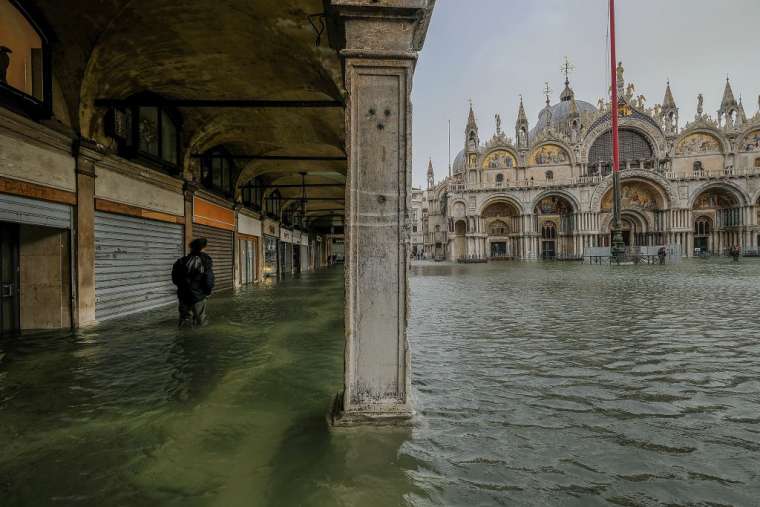
A tourist walks through the water in Piazza San Marco in Venice Photo: Stefano Mazolla/Awakening/Getty Images
According to the National Oceanic and Atmospheric Administration (NOAA) has released data which predicts that 2019 is likely to be the second or third most warmest year since modern temperature records started getting maintained in 1880. October 2019 is the second warmest October on record and only 0.0611 deg Celsius less than the October 2015 temperature. This is also not an aberration because the 10 warmest Octobers have all been recorded since 2003 and the five warmest Octobers are since 2015. October 2019 also marks the 43rd consecutive October and the 418th consecutive month with temperatures, at least nominally, above the 20th century average. (https://www.ncei.noaa.gov/news/global-climate-201910 )
Even though the trends are abundantly clear, the enormity of the extreme weather events triggered by climate change is difficult to explain to people because majority of people tend to stay away from discussions where graphs, charts and numbers are used. However, when such extreme weather events impact places that are of religious and cultural importance to billions of people, as is the case in Venice, we should seize the opportunity to make the common men and women aware that a climate crisis is engulfing the earth.
Pralaya: Noah’s Ark
If the Venice flooding can remind people about the biblical story of Noah’s Ark, where God spared Noah and his family from the great flood which drowned the earth and Noah got into a vessel with examples of different species of plants and animals, then the message of Climate Crisis can be impactful. In Indian puranas, Prithivi Pralaya is an iconic story, which talks of a similar great flood where Manu got into a boat along with seven sages and were saved by Lord Vishnu who took the form of a fish (Matsya avatara) and the boat was hinged to the horn in the head of the great fish.
Only when people realise that due to Climate Crisis our lives are being irreversibly changed and these impacts can be partially mitigated if our leaders immediately take hard decisions, there can be some hope.
In 2015, Pope Francis in his famous Encyclical Letter titled “On Care for our Common Home” had mentioned that the impact of Climate Change can be felt all over the world. He had said that there is interdependence hence all the countries should fight Climate Change together. “Interdependence obliges us to think of one world with a common plan. Yet the same ingenuity which has brought about enormous technological progress has so far proved incapable of finding effective ways of dealing with grave environmental and social problems worldwide. A global consensus is essential for confronting the deeper problems, which cannot be resolved by unilateral actions on the part of individual countries. Such a consensus could lead, for example, to planning a sustainable and diversified agriculture, developing renewable and less polluting forms of energy, encouraging a more efficient use of energy, promoting a better management of marine and forest resources, and ensuring universal access to drinking water” (https://www.indiawilds.com/diary/indiawilds-newsletter-vol-7-issue-vi/ )
Hopefully Venice flooding along with similar extreme weather events from all parts of the world can help the majority of people to wake up to the spectre of climate change and force their leaders to take action. Hopefully all the world leaders will urgently work towards the common cause of fighting the climate crisis.
Migratory Birds add Colour to Vizag:
Conservation News:
Studies on Impact of Climate Change:
India is a Party to the United Nations Framework Convention on Climate Change (UNFCCC). India has submitted Initial National Communication (INC) in 2004 and Second National Communication (SNC) in 2012 to the UNFCCC. As part of the National Communications, the Ministry conducted studies on impact of climate change in India which are summarized in the ‘Vulnerability Assessment and Adaptation’ chapters. For the SNC, climate change scenarios were analysed using high-resolution regional climate model. Simulations for 2020s, 2050s and 2080s indicate an all-round warming for Indian subcontinent. Impact of climate change and climate variability on the water resources are likely to affect irrigated agriculture, installed power capacity, environmental flows in the dry season and wet season.
There is paucity of data to establish direct correlation of climate change with diseases and deaths. However, reports of Intergovernmental Panel on Climate Change (IPCC), World Health Organization (WHO) and other widely available literature indicate health impacts of various climate variables including extreme weather events, air pollution, change in precipitation etc. Various climate model simulation studies also project possible linkages of climate change with frequency and intensity of weather events.
Weather extremes in India in the recent years (2014-2017), as reported under second Biennial Update Report (2018), is given below:
Weather Extreme in India in the recent years (2014-2017)
| Temperatures | |||
| Year | Month | Event | Details |
| 2014 | Jan-Dec | Severe cold wave/cold wave | Cold wave/fog related incidents in northern parts of the country. |
| May-Jun | Heat wave | Intense heat wave events which prevailed over northeastern, central and peninsular parts of the country. | |
| 2015 | May-Jun | Severe heat wave | Severe heat wave incidences over the south peninsula and eastern parts of the country including the States of Andhra Pradesh, Telangana and Odisha. |
| 2016 | Mar-May | Severe heat wave | Intense heat wave conditions which prevailed over northeaster, Central and peninsular parts of the country. |
| 2017 | Mar-Jun | Severe heat wave | Severe heat wave conditions which prevailed mainly over peninsular parts of the country including Andhra Pradesh and Telangana. |
|
Precipitation |
|||
| 2014 | Mar | Hailstorm | Unprecedented widespread hailstorm in Maharashtra and parts of central India in the first week of March severely affected crops, livestock, animals and birds. |
| Sep | Heavy rainfall resulting in floods | Heavy floods in the State of Jammu and Kashmir; Several thousand villages across the state were hit. | |
| 2015 | Apr-Aug | Nor’ wester, Lightening and Heavy rainfall resulting in floods | A severe Nor’ wester ravaged 12 districts of Bihar during April. Gujarat State suffered with flood and heavy rains in June. Flood-related incidence also occurred in West Bengal from June to August. |
| Nov-Dec | Heavy rainfall | Very heavy rainfall during northeast monsoon season in Tamil Nadu and Andhra Pradesh. | |
| 2016 | Jul-Sep | Heavy rainfall resulting floods | Heavy rains and floods in State of Maharashtra caused the ‘Mahad bridge collapse’ incident in August. Flood-related incidences also occurred in ‘State of Bihar from 25the July to 3rd September. Cloudburst and landslides also occurred in Uttarakhand in July. |
| 2017 | May-Oct | Lightning and Heavy rainfall resulting floods | Lightning and rainfall events caused loss of life in various parts of Odisha from May to October; in Bihar from May to July, and; in Maharashtra in June and October. |
| Jul-Sep | Flood and heavy rains caused loss of life in Gujarat. Flood-related incidence, a massive landslide caused deaths at Kotrupi, Himachal Pradesh on 13th August. Floods in Ghaghara, Gomati and Rapti rivers also claimed lives during 4th to 10th September. | ||
|
Cyclones |
|||
| 2014 | Jun | Cyclonic Storm Nanauk over the Arabian Sea | The storm caused heavy rainfall over Lakshadweep, Kerala and coastal Karnataka. |
| Oct | Very Severe Cyclonic Strom, Hudhud, over the Bay of Bengal | Caused human and animal death in north Andhra Pradesh. It caused very heavy rainfall over north Andhra Pradesh and south Odisha and strong gale winds leading to large-scale structural damage over north Andhra Pradesh and adjoining districts of south Odisha. | |
| Oct | Very severe Cyclonic Storm, Nilofar, over the Arabian sea | Under the influence of system. Konkan and Goa region experienced widespread rain with heavy rainfall at isolated places. | |
| 2015 | Jun | Cyclonic Storm, Ashobaa, over the Arabian Sea | No adverse weather was reported due to this system. |
| Jul | Cyclonic Storm, Komen, over the Bay of Bengal | Loss of life due to cyclonic storm, Komen’ in West Bengal and Odisha. Landslides also claimed lives in Manipur. | |
| Oct | Extremely severe cyclonic storm, Chapala over the Arabian Sea | No adverse weather over west coast of India was reported due to this system. | |
| Nov | Extremely severe, cyclonic storm, Megh, over the Arabian Sea | No adverse weather over west coast of India was reported due to this system. | |
| 2016 | May | Cyclonic Storm, Roanu over the Bay of Bengal | It caused adverse weather like heavy rain and strong wind all along east coast of Sri Lanka and India ( including Tamil Nadu, Andhra Pradesh, Karnataka, Rayalseema, Odisha, Gangetic West Bengal, Assam, Meghalaya, Nagaland, Manipur, Tripura) |
| Oct | Cyclonic storm Kyant over the Bay of Bengal | The system caused rainfall at isolated places over Tamil Nadu, Puducherry and coastal Andhra Pradesh. | |
| Nov | Cyclonic storm Nada over the Bay of Bengal | The system caused heavy rainfall at isolated places over Tamil Nadu and Puducherry. | |
| Dec | Very Severe Cyclonic storm, Vardah over the Bay of Bengal | ‘Vardah’ caused heavy to very heavy rainfall over Andaman & Nicobar Islands. It also caused extremely heavy rainfall over Chennai, Thiruvallur, Kanchipuram districts of Tamil Nadu. It caused human and animal death in Tamil Nadu. | |
| 2017 | Apr | Cyclonic storm Maarutha over the Bay of Bengal | The system caused heavy rainfall over Andaman & Nicobar Islands. |
| May | Severe cyclonic storm ‘Mora’ over the Bay of Bengal | ‘Mora’ developed in the onset phase of southwest monsoon. The system caused heavy rainfall at isolated places over Arunachal Pradesh, Manipur, Nagaland, Mizoram and Tripura and a few Places over Assam and Meghalaya. | |
| Nov | Very Severe Cyclonic Storm “Ockhi” over the Bay of Bengal | It was a rare cyclone with rapid intensification after the genesis stage. It caused isolated heavy rainfall over south Tamil Nadu and over south Kerala. It caused heavy to very heavy rainfall over Lakshadweep and heavy rainfall over north coastal Maharashtra and adjoining south coastal Gujarat. | |
Apart from National Disaster Management Authority (NDMA) each State has its own State Disaster Management Authority to deal with such events.NDMA has issued several disaster specific guidelines for managing extreme weather-related disasters such as cyclones, floods and heat wave. National Disaster Management Plan (NDMP) has been formulated to assist all stakeholders including State Governments in disaster risk management of various hazards including hazards related to climate change.
Climate change is a global challenge and requires efforts by all nations based on the principle of Common but Differentiated Responsibility and Respective Capabilities. Government of India is committed towards combating climate change at the highest level through its several programs and schemes.
The National Cyclone Risk Mitigation Project (NRCMP) is under implementation in eight coastal states to mitigate the sufferings of the coastal community. Cyclone shelters and early warning system created under this project proved to be of great help during cyclones ‘Phailin’ in 2013, ‘Hud-Hud’ in 2014, ‘Titli’ in 2018 and cyclone ‘Fani’ in 2019.
Under National Monsoon Mission, the Ministry of Earth Sciences has set up state of the art dynamical prediction systems for short, medium & extended range forecasts and seasonal forecasts. This has helped to upgrade early warning system so that advance warning is available with concerned agencies to prepare themselves for mitigating adverse impacts of extreme weather events.
The Government is implementing National Action Plan on Climate Change (NAPCC) which comprises eight missions in specific areas of solar energy, energy efficiency, water, agriculture, Himalayan ecosystem, sustainable habitat, green India and strategic knowledge on climate change. NAPCC provides an overarching framework for all climate actions. Thirty three States/Union Territories (UTs) have prepared their State Action Plan on Climate Change in line with NAPCC taking into account State’s/UT’s specific issues relating to climate change. Under the Paris Agreement, India has submitted Nationally Determined Contributions (NDC) with target to reduce the emissions intensity of its Gross Domestic Product (GDP) by 33 to 35 % by 2030 from 2005 level, to achieve about 40% cumulative electric power installed capacity from non-fossil fuel based energy resources by 2030, and to create an additional carbon sink of 2.5 to 3 billion tones of CO2eq through additional forest and tree cover by 2030.
The Government is also implementing the scheme, ‘National Adaptation Fund for Climate Change’ to support adaptation measures of States/UTs in areas that are particularly vulnerable to the adverse impacts of climate change.
This information was provided by Minister of State, Ministry of Environment, Forest & Climate Change Shri Babul Supriyo in written reply to a question in Lok Sabha today.
Toxic Sambhar Lake: The Great Bird Death
Eighteen thousand birds have died in two weeks in the toxic Sambhar lake in Rajasthan and the numbers keep increasing.
Sambhar lake is a rainfed inland lake in arid Rajasthan. As a wetland of international importance, it got the status of Ramsar site in 1990. Sambhar lake is also recognised as an Important Bird Area (IBA) due to the presence of resident as well as migratory avifana, especially the iconic flamingos as well as water fowl. Every winter millions of birds migrate to the Sambhar lake to escape the harsh winters.
Suddenly locals and birdwatchers noticed dead birds as well as decomposed carcasses of birds. On inspection it was found that birds were dying due to paralysis of limbs and wings. After examining the samples, the Indian Veterinary Research Institute (IVRI) Bareilly concluded that birds are dying due to Avian botulism. This avian botulism is the result of Clostridium botulinum bacteria producing toxins. There are seven antigenic types of Clostridium botulinum out of which Type E is found in soils and in sediments in oceans and lakes. These happen when there is microbial contamination and acidification. So it is expected that the Sambhar Lake waters have become highly contaminated due to the discharge of industrial effluents. The Director of IVRI, Dr Raj Kumar Singh said “These bacteria are harmless initially until the environmental factors and anaerobic conditions prompt them to germinate and begin the vegetative growth of the toxin-producing bacterial cells.”
Anerobic conditions can happen when suddenly some plant and animal matter have been dumped into the water. Dumping of debris can also cause death of plants and lead to decomposition and increase anaerobic conditions. So it could have been a combination of many factors which the Government has to examine. Given the high anthropogenic pressures around the Sambhar lake, it needs to be seen if the Government can rise over local pressures and find the root cause of the problem. Else, the wintering migratory birds that are supposed to come later in December will die in large numbers.
If designated Ramsar sites are facing such tough challenges then one can easily guess how bad is the state of wetlands in our country. We need a strong wetland authority in place to look after the wellbeing of wetlands. Unfortunately, the real estate lobby is always waiting for a chance to grab wetlands so that they can dump construction debris and fill and start constructing buildings. So State Governments either don’t want to put in place Wetland Authorities or don’t want to give them teeth. The public need to understand that wetlands are also repositories of carbon and play a big role in carbon sequestration and help contain climate change.
Swachh Nirmal Tat Abhiyan:
https://www.indiawilds.com/forums/showthread.php?19358-Swachh-%96-Nirmal-Tat-Abhiyaan
Equipment Discussions:
Canon launches EOS Ra Camera for Astrophotography
Canon has launched a modified version of its popular 30.3 MP mirrorless EOS R camera for astro photography use and has named it EOS Ra. This cameras has a a modified filter infront of the sensor which allows transmission of four times more 656.3 nm Hydrogen-alpha wavelength. Every EOS camera has an infrared filter. In the EOS Ra this infrared filter has been modified. One should remember that when the infrared filter is removed or modified, then the camera can’t be used for normal photography as the photos will look different. This camera is meant for a specific purpose and unless, you are wanting to purely use it for astrophotography then better to stick to the regular EOS R.
This camera will solve a big problem of astrophotography enthusiasts. The price of the EOS Ra is $2499 US Dollars. Check the below link for the press release:
Leica Announces SL2 Mirrorless Camera
Leica has announced a successor to its SL mirrorless camera by launching the Leica SL2.
Salient Features:
Sensor: Full frame CMOS censor.
Sensor Resolution: 43.7 MP. 8368 x 5584 pixels.
Dimensions (WxHxD) 146 x 107 x 42 mm
Weight approx. 835 g (without battery)
Image Stabilisation: 5 axis in body image stabilisation.
Colour depth Stills: DNG 14 bit RGB and JPEG 8 bit.
Shutter speeds: Mech. shutter: 30 min to 1⁄8000 s /
Electronic shutter function: 1 s to 1⁄40000 s
Flash Synch: up to 1/250 s
ISO Sensitivity: Auto ISO: ISO 100 to ISO 50000, Manual: ISO 50 to ISO 50000 upto 50,000
Video: max file size 96 GB
The Leica SL2 can shoot at 5K in .mov at 29.97 fps, 25 fps, 23.98 fps.
It can shoot in Cinema 4K in .mov at 59.94 fps, 50 fps, 29.97 fps, 25 fps, 24 fps
In Full HD it can shoot at 180fps.
Media: SD card, Video can also be recorded in 10 bit via HDMI output
For more details check the below link –
https://www.indiawilds.com/forums/showthread.php?19355
Natural History
COUNTRY NOTEBOOK: M. Krishnan: ‘Tiger, tiger, not burning bright‘ shared By Saktipada Panigrahi
https://www.indiawilds.com/forums/showthread.php?8852-Country-notebook-m-krishnan&p=88090#post88090
Wildlife Photography
White footed Fox pups by Vipin Sharma
https://www.indiawilds.com/forums/showthread.php?19344-LRK-diary-Apr-19
Tiger in Kabini by Shyamala Kumar
https://www.indiawilds.com/forums/showthread.php?19336-Watchful-eyes-in-the-forest
Black-chinned Babbler by Samrat Sarkar
https://www.indiawilds.com/forums/showthread.php?19330-Black-chinned-Babbler
Sunset by Abhishek Jamalabad
https://www.indiawilds.com/forums/showthread.php?19324-Sunset-on-the-Intertidal
Blister-Beetle by Arun Acharjee
https://www.indiawilds.com/forums/showthread.php?19329-Blister-Beetle
Jumping spider with katydid catch by Prajwal Ullal
https://www.indiawilds.com/forums/showthread.php?19326-The-cute-eyes-of-the-predator
Pelican by Sabyasachi Patra
https://www.indiawilds.com/forums/showthread.php?19323-Pelican-B-amp-W
I look forward to your inputs and support in preserving the last tracts of wilderness and wildlife left in our beautiful country and raising awareness about it. For other interesting articles and images check –
http://www.indi
To post in the IndiaWilds forums, you can register free of cost using your Full Name as user id at:
http://www.indiawilds.com/forums/register.php
If you are already a member of IndiaWilds and have forgotten your user id and/or password you can mail to:
administrator@indiawilds.com
If you want to contribute original articles, or for any image enquiries please send a mail to:
administrator@indiawilds.com
Regards,
Sabyasachi Patra
Profile | Contact Us | Facebook | Diary | Equipment reviews | Forums | IndiaWilds You Tube Channel
Please post your views and feedback in the comments below.
- Endangered Wild Buffalo of Kaziranga - 4 July,2024
- Leopards: The Last Stand Trailer 2 - 1 July,2024
- GoPro Hero 12 Black - 6 September,2023

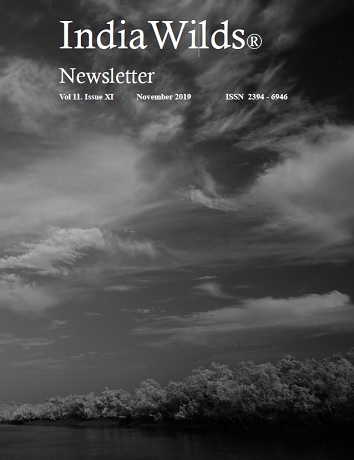

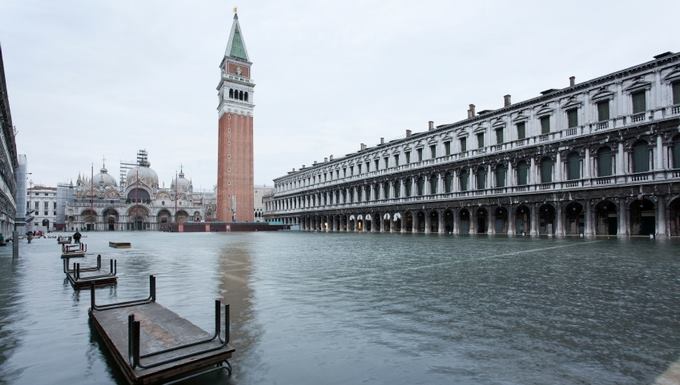

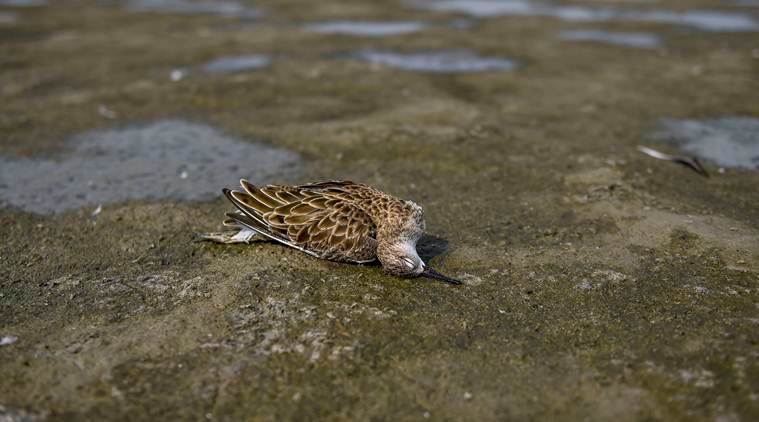

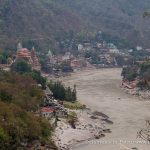

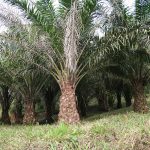

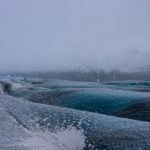


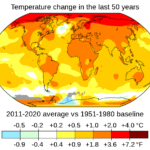



Leave a Reply